Are you a caring dog owner who wants to make sure your little friend stays healthy? Then buckle up, because we’re going to talk about bloat today, which is something that every dog lover should know about.
This potentially life-threatening condition can happen to any dog, but some breeds are more likely to get it than others. Before you get a new dog or if you already have one of these breeds, let’s learn more about bloat so we can keep our dogs safe. Believe us when we say that this is a blog post that every responsible dog owner must read!
What does bloat mean in dogs?
Dogs can get bloat, which is also called gastric dilation-volvulus (GDV), which is a serious condition that could kill them. In this case, the stomach fills up with gas, liquid, or food and then expands, putting pressure on other organs and cutting off blood flow.
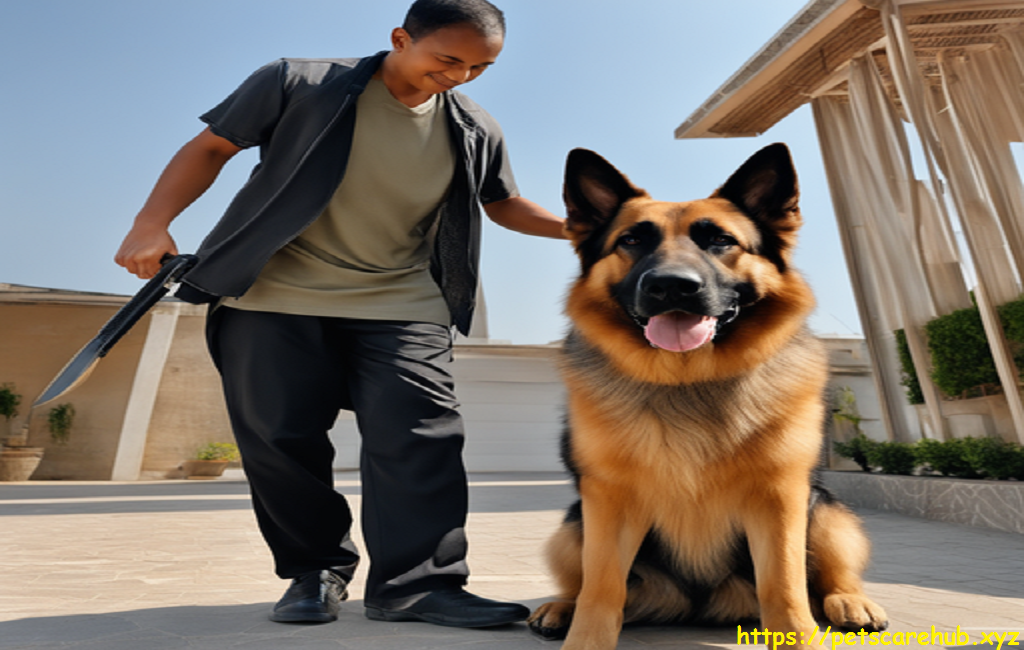
Most of the time, when someone is bloated, their stomach will rotate or twist around itself, cutting off its blood supply and stopping gas from leaving. Not only does this hurt your dog terribly, but it can also cause tissue death, internal bleeding, shock, and even death if you don’t treat it.
Any dog breed can get bloat, but some breeds are thought to be more likely to get it because of the way their bodies are built. These dog breeds often have a deep chest, a narrow waist, and big ribs, all of which make them more likely to bloat.
It is known that Great Danes, Saint Bernards, Irish Setters, Weimaraners, Doberman Pinschers, and German Shepherds are more likely to get bloat than other breeds. Little dogs with deep chests, like Dachshunds and Boston Terriers, may also be at risk.
Even though no one knows for sure what causes bloat, there are a few things that may make it more likely for your dog to get it. Some of these are genetics (if it runs in the family), eating too quickly, or working out hard right after a meal.
Dog owners should know the symptoms of bloat so they can take their dogs to the veterinarian right away if they need to. These are some common signs of bloating:
- Failed attempts to throw up or gagging
- Swelling or distention of the stomach that can be seen
- Being restless and pacing
- Drooling too much
- Having trouble breathing or breathing quickly
- Gums that are pale and/or a fast heart rate
If any of these things happen to your dog, you should take them to the vet right away for emergency care. Bloat is a medical emergency that can get worse quickly, so getting your dog treated right away is very important if you want him to live.
Sometimes, surgery is needed to fix a twisted stomach and take pressure off of other organs. Depending on how bad your dog’s condition is, your vet may also need to give him or her IV fluids, medicine, or oxygen therapy.
To keep your dog from getting bloat, you might want to feed them smaller meals more often during the day instead of one big meal. Do not give your dog a lot of exercise right before or after meals, and use a slow feeder bowl to keep them from eating too quickly.
Also, keep an eye out for any changes in your dog’s behavior or appetite, as these could be early signs of bloat. Taking your pet to the vet for regular checkups can also help find problems before they get worse.
Learning About the Things That Can Cause Bloat
Gastric dilatation-volvulus (GDV), which is another name for bloat, is a potentially life-threatening condition that big, deep-chested dog breeds often get. It happens when the stomach gets full of gas, food, or liquid, which makes it twist and expand. This stops blood from getting to important organs, which can cause shock, organ damage, or even death if it is not treated right away.
Any dog can get bloat, but some breeds are more likely to get it because of how their bodies are built and their genes. Knowing the things that put dogs at risk for bloat can help owners spot possible warning signs and take steps to keep their dogs from getting this condition.
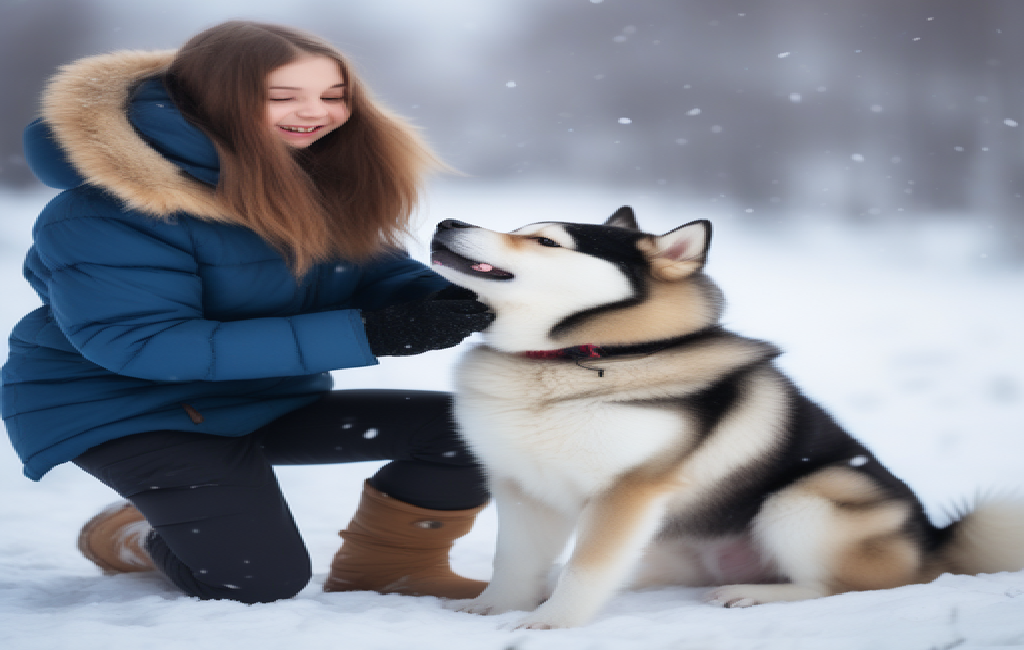
- Large breeds with deep chests
Bloat is more likely to happen in large breed dogs with deep chests than in smaller breeds. Large dogs like Great Danes, Saint Bernards, Doberman Pinschers, Weimaraners, Irish Setters, Afghan Hounds, Standard Poodles, and German Shepherds are in this group. Because of the size of their chest, their stomach has more room to move around and may even twist or flip over in some cases.
- Age
Bloat can happen to dogs of any age, but it happens more often in older dogs whose stomach muscles aren’t as strong. These muscles may get weaker over time, which makes it easier for dogs’ stomachs to get bigger.
- How People Eat
To avoid getting bloat, dogs should not eat too quickly or gulp down a lot of food all at once. It does this because the stomach can quickly fill up with gas and water, which can make it twist or flip. Eating from a raised bowl has also been linked to a higher risk of bloat in some breeds with deep chests.
- Work out after meals
Dogs are also more likely to get bloat if they do a lot of vigorous exercise right after eating. This is because the activity can make the stomach get bigger, which makes it more likely that the person will twist or flip.
- Putting stress
Some people get bloated when they are stressed or anxious. This might be because stress and anxiety can change how digestion and stomach motility work.
- Abnormal Movement of the Stomach
Dogs whose stomachs move in strange ways may be more likely to get bloat because their digestive systems might not work right. This can include things like stomach infections or vomiting all the time.
- What Happened Before
If your dog has had bloating before or if someone in your family has had bloating, they may be more likely to get it themselves.
How to Keep Dogs from Bloating
There is no surefire way to keep your dog from getting bloat, but there are things pet owners can do that might lower the risk. Some of these are:
- Giving less than one big meal during the day instead of several smaller ones.
- Putting your dog’s food bowls up high can keep them from eating too quickly and lower their risk of getting bloat.
- Avoiding hard workouts for at least an hour after a meal.
- Working with your vet to treat any underlying conditions or problems that might be causing the bloating.
You should take your dog to the vet right away if you think he or she is having bloat. The chances of a good outcome are higher if treatment starts right away.
Top Dog Breeds That Often Bloat and Why
Bloat, which is also called gastric dilatation-volvulus (GDV), is a very dangerous condition that big, deep-chested dog breeds can get. It happens when the stomach fills up with food, gas, or liquid and then turns on its long axis, trapping the contents inside. This rotation cuts off the stomach’s blood supply, which can break the stomach and cause shock and death if it is not treated right away.
Bloat can happen to any dog, but some breeds are more likely to get it than others. This section will talk about the dog breeds that are most likely to get bloat and explain why they are more likely to get it.
- Big Danes
A Great Dane is one of the biggest dog breeds. They are known for being gentle and being very tall. But because their chests are so deep, they are very likely to get bloated. No one knows for sure why Great Danes get bloat, but it could be because of their big size and deep chest, which puts pressure on their digestive system.
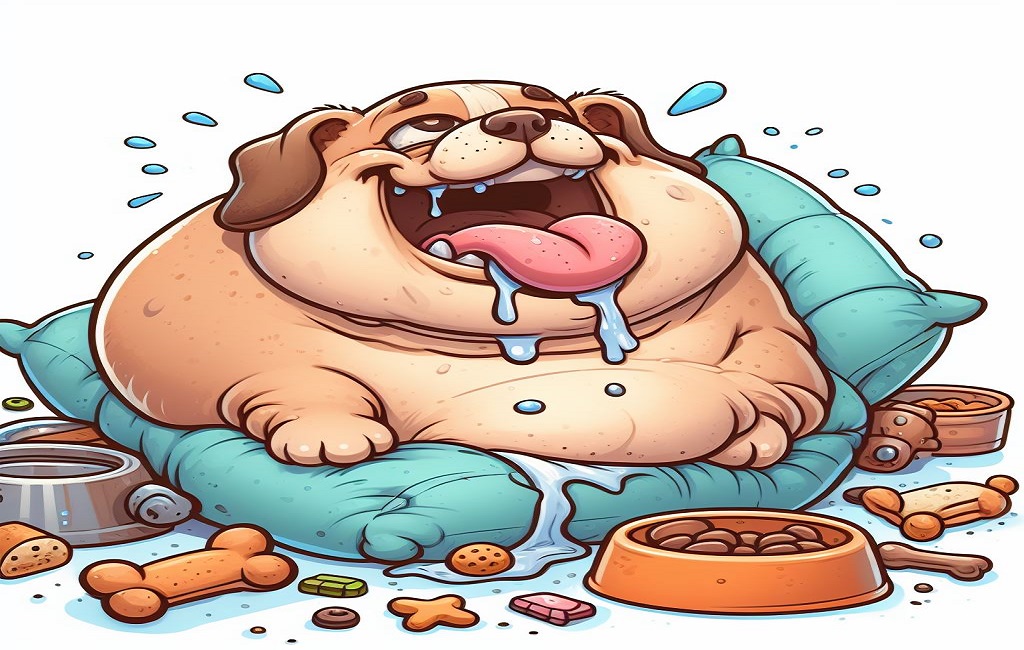
- German Shepherd Dogs
People love working with German Shepherds because they are smart and loyal. They tend to get bloated because their bodies are thin and their waists are small. Also, their high levels of activity and stress from work or training may make them more likely to get bloat.
- The Doberman Pinscher
Doberman Pinschers are active dogs with strong hearts and legs. Because of the way their bodies are built, they are more likely to get bloated, and the fact that they are very active may also play a part. It is also known that Dobermans are more likely to have stomach or gut problems, which can make them bloat.
- Dogs named Saint Bernards
Because they are big, heavy, and have thick chests and wide torsos, Saint Bernards can grow. Because of their size and shape, their digestive system is under a lot of stress, which makes it easy for the stomach to turn and cause bloating.
- Great Dane Poodles
Standard Poodles are beautiful dogs with slim bodies that are thick in the chest. They are very busy and full of energy, but their fast metabolism and tendency to eat quickly can make them more likely to get bloat. Additionally, Standard Poodles may get a natural tendency to bloat from their parents.
- Sniffer dogs
Bloodhounds are scent hounds that have droopy skin and a strong sense of smell. Because their chests are so deep, pressure builds up on their digestive system, which makes them more likely to bloat. The fact that they eat quickly also makes this situation worse.
- The Irish Setters
They have long legs and a thick chest, and they are very active hunting dogs. Because they have a lot of energy, they might gulp down food quickly, which makes them more likely to get bloat. Irish Setters may also be more likely to get this problem because of their genes.
- Hermann Weimar
The sleek and strong bodies of Weimaraners make them great for sports. Their chests are very deep, which puts pressure on their gut system and makes them more likely to get bloat. The fact that Weimaraners eat quickly and have sensitive tummies also puts them at risk.
- The Basset Hound
The Basset Hound has short legs, a long body, and a thick chest. Because of the way their bodies are built, they are more likely to get bloating because their long bodies put extra stress on their internal systems.
- Dogs called Golden Retrievers
Golden Retrievers are popular family pets that are known for being friendly and lively. Their size and thick chests, on the other hand, make them more likely to get fat. Also, big dogs like Golden Retrievers may get a natural trait that makes them more likely to bloat from their parents.
Finally, bloat can happen to any dog, but some breeds are more likely to get it because of how their bodies are built, how active they are, how sensitive their bellies are, or because of genetics. People who own these types need to know the signs of bloat and take steps to avoid it, like giving their dogs several small meals throughout the day, stopping them from eating quickly, and not letting them exercise right after eating. If your dog is showing signs of bloat, they need to see a vet right away to improve their chances of life.
Big Dane
The Great Dane is one of the most popular dog breeds. Despite being big, it is known for being gentle and friendly. But people who own this beautiful breed should know that their dogs are more likely to get bloat. Gastric dilatation-volvulus (GDV), which is another name for bloat, is a dangerous disease that can happen to any dog but is more common in big dogs like Great Danes.
The fact that Great Danes have deep chests and narrow waists makes them more likely to get bloat. This is because gas can build up and twist in their stomachs more easily. This is especially true if they eat big meals or work out hard right after eating. Also, their size puts extra stress on their gut system, which makes bloating more likely.
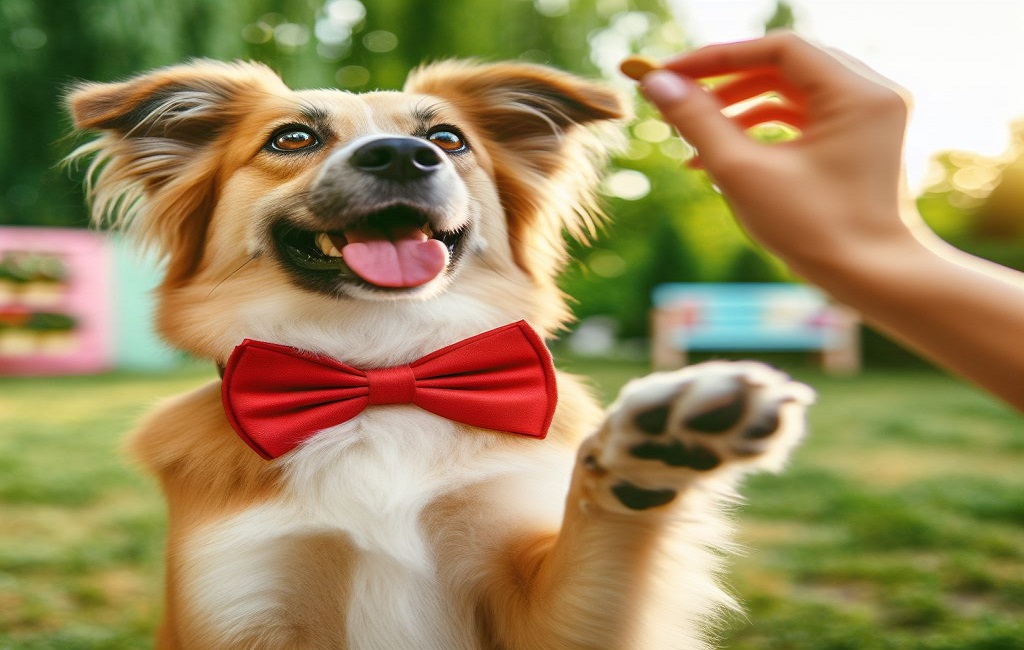
The fast pace at which Great Danes eat is another thing that makes them bloat. Because they are big dogs with huge appetites, they often gulp down their food without eating it properly. This can cause them to take in too much air along with the food, which can make their bellies bloat and hurt.
Great Danes are more likely to get fat because of their genes. Studies have shown that some genes in this breed are more likely to cause bloating than others. Before getting a Great Dane baby, people who want to own one should learn about the breeder’s past and the dog’s genes.
When a Great Dane has bloat, they may be anxious, pace, have a swollen abdomen, and try to vomit but fail. In the worst cases, the stomach can twist around on itself, cutting off blood flow to critical organs and killing the person. So, if you think your Great Dane has grown, you need to take them to the vet right away.
In addition to genetics, there are other things that can make it more likely for Great Danes to get fat. Some of these are age (older dogs are more likely to get it), stress, and eating from bowls that are too high.
People who own Great Danes should feed them smaller meals throughout the day instead of one big meal to keep them from getting bloat. You can also use slow feeding bowls to help them eat more slowly. It’s important to make sure that mealtimes are quiet and calm, and you shouldn’t do a lot of movement before or after eating.
If you want to get a Great Dane for your family, make sure you learn a lot about breeders and their bloodlines to lower the risk of bloat. Even though this condition can’t always be avoided, people can take the right steps to lower their chances of getting it and catch it early if it does happen. Your Great Dane can live a happy, healthy life without bloat as long as you take good care of it and keep an eye on it.
The Irish Wolfhound
The Irish Wolfhound is a beautiful, royal-looking dog that has a long past in Ireland as a guard dog and skilled hunter. Males can be up to 32 inches tall at the shoulder and weigh between 120 and 180 pounds, making them one of the biggest dog breeds. Irish Wolfhounds are known for being gentle, even though they are big dogs. They make great family pets.
However, Irish Wolfhounds are more likely than many other big breed dogs to get bloat or stomach dilatation volvulus (GDV). This potentially deadly disease happens when a dog’s stomach gets full of food or gas, making it grow and spin around on its axis. This spin can cut off blood flow to the stomach and other important organs, which can hurt tissues and cause shock.
Big dogs, like Irish Wolfhounds, are more likely to get this condition than small dogs because their chests are deeper and their waists are narrower. Other things that might make an Irish Wolfhound more likely to get GDV are eating too quickly, working out right after a meal, drinking too much water all at once, being stressed or excited right after eating, and having a history of GDV in the breed’s genes.
The signs of fat can be minor, but you shouldn’t ignore them. If you see your Irish Wolfhound moving restlessly or trying over and over to throw up, but failing, they may be bloated. Some other signs may include drooling a lot or looking uncomfortable when touched around the belly.
If you don’t treat bloat, it can get worse and cause serious problems like tissue death and septic shock. Getting your Irish Wolfhound to the vet right away is very important for its health. Depending on how bad the situation is, treatment may include releasing pressure from the stomach, surgery to straighten out the stomach, and medicine to treat shock and keep it from getting infected.
To help Irish Wolfhounds avoid bloat, it’s important to make changes to their food and way of life. Instead of giving your dog one big meal, give them several smaller meals spread out throughout the day. Use raised feeders to stop them from gulping, don’t feed them right before or after exercise or other stressful activities, and keep an eye on their food and water intake when they are excited or stressed.
In addition to these steps, you should talk to your vet about other ways to lower your Irish Wolfhound’s risk of getting bloat. You can help your gentle giant stay healthy and happy for many years by giving it the right care and attention.
The Saint Bernard
The Great St. Bernard Pass is where the Saint Bernard, a big and strong dog breed, got its start in the Western Alps. Monks at the hospice of St. Bernard de Menthon first bred them as working dogs to help with search and rescue efforts in the dangerous mountain terrain.
Saint Bernards are often thought of as great family pets because they are big and friendly. On the other hand, this breed can get bloat, also called stomach dilatation-volvulus (GDV), which is very dangerous.
Bloat happens when a dog’s stomach gets full of gas, food, or fluid, making it quickly get bigger. This can cause the gut to twist, which can cut off blood flow and keep gas inside. This disease is very painful for dogs and can be fatal if not handled.
Due to their thick chests and bigger bodies, Saint Bernards are one of the top ten breeds that are most likely to bloat. They are more likely to get hurt because their barrel chest gives their stomachs more room to grow before they press on other organs.

Also, some things can make it more likely for a Saint Bernard to get fat. For example, eating too quickly or drinking a lot of water right after a meal can make you take in too much air, which can cause you to get bloated.
Being busy right before or after eating can also make Saint Bernards fat. It is important to keep an eye on how active your dog is around meals and make sure they have a calm place to eat.
Any dog type can get bloat, but Saint Bernards are more likely to get it, so it’s important to know about it and take steps to protect them. Talking to your vet about meal times, amount sizes, and other ways to keep your Saint Bernard safe from this potentially fatal disease is a good idea.
Boxing
The Boxer is a breed that is often forgotten when talking about how likely it is to get bloat. People love these active and friendly dogs for their fun and loving attitudes. However, they are more likely to get this possibly life-threatening disease.
Boxers are brachycephalic, which means their faces are flat and their noses are small. For some reason, this makes them look cuter, but it also makes them more likely to explode. When brachycephalic dogs eat, they often gulp their food down and swallow a lot of air at the same time. This can cause their stomachs to get too full of gas.
Boxers are more likely to get bloat for other reasons besides the way their bodies are built. Their breed has a deep chest, which gives their bellies more room to twist and turn when they get bloated. This could happen if you move around or work out too much after a big meal.
Stress or worry is another thing that might make Boxers bloat. Some things, like moving or being left alone for long amounts of time, can make these sensitive dogs very nervous. Being stressed can make the stomach tighten more, which can make it easier for the stomach to flip over.
As has been said in other parts of this piece, eating quickly is another thing that can make you fat. Bad news is that Boxers are known for having huge appetites and quickly swallowing their food without chewing it properly. This habit not only makes you more likely to get bloat, but it can also cause other stomach problems, like choking or throwing up.
Boxers should not have one big meal a day. Instead, they should be fed several smaller meals throughout the day. A slow feeder bowl or puzzle toy can also help them eat more slowly and avoid swallowing too much air. Plus, you should avoid training your Boxer right after they eat, and you should keep a close eye on them when they are stressed or anxious.
You must take your Boxer to the vet right away if you notice any signs of bloat, such as an enlarged belly, whining or nervousness, or attempts to vomit that don’t work. Bloat is a medical issue that can kill you and needs to be treated right away.
Bull Mastiff
Mastiffs are big, strong dogs that can weigh up to 230 pounds. They are sometimes called the “gentle giants” of the dog world. People like to keep them as pets because they are loyal and have a strong build. But people who are thinking about getting one should know that this breed is more likely to get bloat.
Bloat, which is also known as gastric dilatation-volvulus (GDV), is a dangerous disease that happens when a dog’s stomach fills with gas or fluid and turns inside out, locking food and gases inside. The dog can’t burp or puke because of this spin, which can quickly cause serious problems like tissue death and organ failure.
Mastiffs are unfortunately one of the dog types most likely to bloat because of their genes. This means that they are more likely to get this problem than other breeds, even if they get good care and live a long life.
The fact that Mastiffs have deep chests is one reason for this higher chance. Their chest cavities are shaped in a way that leaves less room for their organs in the abdomen, which makes it easier for their bellies to get swollen. Because they are big and heavy, they also tend to eat big meals quickly without chewing well, which is another thing that can make them bloated.
Mastiffs are also known for being calm and relaxed dogs, which can make it hard for owners to notice early signs of bloat. Some of these are being antsy or walking after eating, drooling a lot, and having a gut that looks bigger than usual.
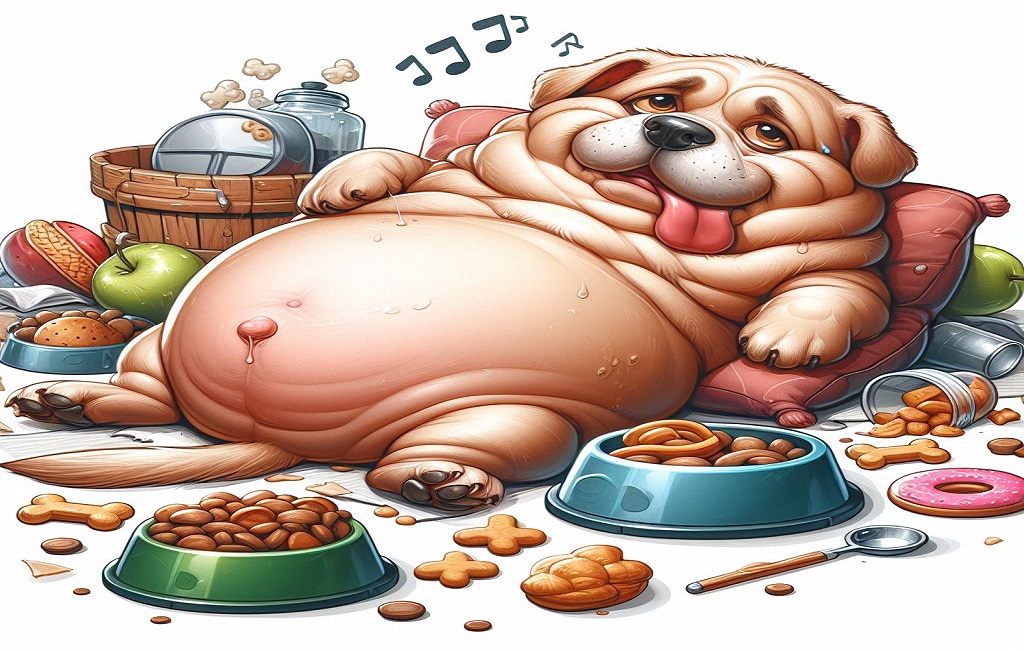
Bowel problems can happen to any dog breed, but Mastiff owners need to be extra careful and learn more about the issue. To lower the risk of bloat, you can feed your dog several small meals throughout the day instead of one big meal, keep them from exercising or doing vigorous activities right before or after meals, and make sure their food bowls are raised so they don’t swallow as much air while they eat.
Along with these safety measures, Mastiff owners need to know the signs of bloat and get their dog to the vet right away if they think their dog may have this life-threatening disease. Knowing that Mastiffs tend to get bloat and taking good care of them can help them live happy and healthy lives.
How to Treat and Stop Dogs From Bloating
Gastric Dilatation Volvulus (GDV), which is another name for bloat, is a dangerous disease that can happen to any type of dog and could even be fatal. Still, there are some dog types that are more likely to get bloat than others. This part will talk about how to treat and avoid bloat in dogs.
How to Treat Dog Bloat:
It is very important to get your dog to the vet right away if it shows signs of bloat, such as a swollen belly, nervousness, excessive drooling, or dry coughing without throwing up. When you have bloat, your stomach can twist, which can cut off blood flow and kill tissue in the area.
As soon as your dog gets to the vet’s office, they will probably use decompression or even surgery to ease the pressure in their stomach. While these methods are important for treating severe cases of bloat, there are also ways you can help avoid your dog from having this condition in the first place.
Preventing Bloat in Dogs:
- Feed Smaller Meals: Feeding smaller meals throughout the day instead of one large meal has been shown to reduce the risk of bloat by up to 60%. This allows food to move more easily through your dog’s digestive system and reduces the chances of gas building up.
- Slow Down Meals: Rapidly eating food or drinking large amounts of water can increase a dog’s risk for bloating. Using slow feeder bowls or puzzle toys can help to slow down the speed at which your dog eats.
- Avoid Exercise Before and After Meals: Vigorous exercise, especially right before or after a meal, can increase the chance of bloat. Make sure your dog has plenty of time to rest and eat before participating in any hard activities.
- Avoid high Feeders: Contrary to popular opinion, high feeders have not been proven to reduce bloating in dogs. In fact, some studies have shown that they may actually increase the risk of bloat.
- Monitor Food Quality: Foods with high amounts of fat or citric acid have been linked to an increased chance of bloat. It’s encouraged to speak with your doctor about the best food for your individual breed of dog.
- Regular Exercise: Regular exercise can help keep good health and avoid fat in dogs, both of which are linked with an increased chance of bloating.
- Know Your Dog’s Risk: Certain breeds are more inclined to having bloat, including big and deep-chested breeds like Great Danes, Boxers, and St. Bernards. If you have one of these breeds, it’s important to take extra steps and be aware of early warning signs.
- Familiar ize Yourself with the Symptoms: Knowing the signs and symptoms of bloat can help you move quickly and seek treatment for your dog. Common signs include a swollen belly, irritability, excessive sweating, and dry coughing without causing vomit.
By taking these preventative steps and being aware of the early signs of bloat, you can help keep your dog safe from this potentially life-threatening disease. It’s important to speak with your doctor if you have any worries, as they can provide unique suggestions for your individual pet.
Diet suggestions
Diet plays a key part in the general health and well-being of our canine friends. It not only affects their physical look and energy levels, but also their internal performance and vulnerability to certain health conditions. In the case of bloat, finding the right food for your dog can make all the difference.
One of the major adding reasons to bloat is a fast eating habit. Larger breed dogs are often known to eat quickly, which can lead to extra air intake and increase the chance of bloat. Therefore, it is important to choose a diet that supports slower eating habits in these breeds.
Firstly, it is recommended to feed your dog smaller meals throughout the day rather than one big meal. This will prevent them from gulping down food too quickly and lower the risk of bloating. Additionally, feeding your dog at regular times will help control their nutrition and keep their bellies from becoming too empty or too full.
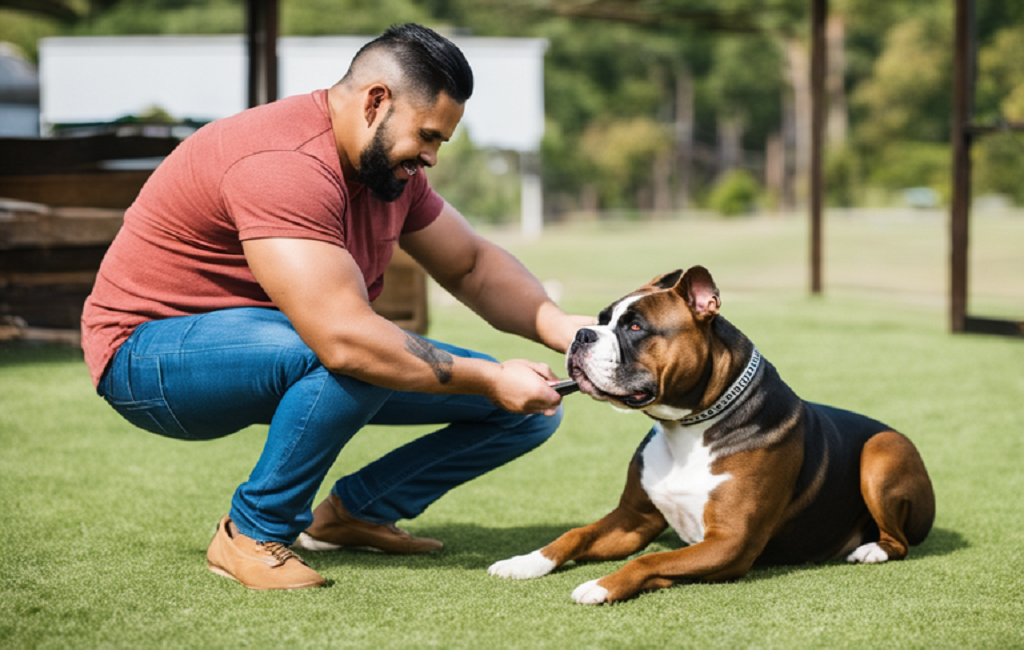
Another important factor to consider when picking a diet for breeds prone to bloat is the type of food they eat. Dry kibble has been found to be less likely to cause bloat compared to wet or cooked food. This may be due to its lower fat content and higher fiber content, slowing down processing and lowering gas build-up in the gut.
When it comes to ingredients, it is best to avoid diets with high amounts of fat or additives such as citric acid which can lead to stomach pain. Instead, pick for high-quality protein choices such as chicken.
Exercise measures
When it comes to avoiding bloat in your dog, exercise steps are important. As stated earlier, certain breeds are more vulnerable to this problem due to their physical traits. Therefore, it is important to be careful and aware of your dog’s exercise levels.
First and foremost, it is important to understand that dogs should not engage in heavy exercise shortly after eating. This can raise the risk of bloat as the stomach is still full and may be more likely to twist or spin. It is recommended to wait at least one hour after a meal before participating in any hard activities with your dog.
In addition, some high-energy dog types may have a tendency to gulp down their food quickly, which can also increase the risk of bloat. To avoid this, try giving them smaller meals throughout the day instead of one big meal. Additionally, using slow-feeder bowls or putting hurdles in their food bowls can help slow down their eating process.
Furthermore, be careful when training your dog in hot and sticky weather conditions. Heatstroke can also add to bloat by causing dehydration and changing the fluid balance within the body. Make sure your dog has access to plenty of fresh water during and after exercise and avoid moving during peak heat hours.
If you have a larger breed dog that loves running or playing fetch, try not to toss balls or frisbees too high up in the air as they may swallow large amounts of air while jumping up for them. Engaging in low-impact sports such as walking or swimming can be a better option.
Overall, it is important to be aware of your dog’s individual wants and limits when it comes to exercise. If you notice any signs of pain or strange behavior during or after physical activity, speak with your doctor for advice on how to best handle your dog’s exercise schedule.
Signs to watch out for
Bloat, also known as stomach dilatation-volvulus or GDV, is a life-threatening disease that regularly affects dogs. It happens when a dog’s stomach fills with air and becomes bent or turned, locking food and gas inside. This condition can quickly become deadly if left unchecked, making it important for dog owners to learn about the higher chance of bloat in certain breeds.
If you are considering getting a dog or already have one, it is crucial to be aware of the signs that may indicate bloat. Early discovery and quick treatment can greatly improve your pet friend’s chances of surviving this dangerous condition. Here are some common signs to watch out for in breeds predisposed to bloat:
- Distended Abdomen
One of the most obvious signs of bloat is a visibly swollen belly. In dogs with this disease, their stomach grows greatly due to the buildup of gas and water. The growth may cause discomfort and even pain for your dog, leading them to stand oddly or pace around restlessly.
- Unproductive Vomiting
Another possible sign of bloat is ineffective vomiting – where your dog tries to puke but nothing comes out except small amounts of white foam or phlegm. This happens because the stomach has pulled itself shut at both ends during bloating, blocking any contents from leaving.
- Excessive Drooling
Dogs having bloat may drool excessively due to pain and nausea caused by a swollen stomach pushing against other organs , including the diaphragm. If your dog is leaking drool and looks like it wants to puke, it’s time to call your vet.
- Weakness or Lethargy
If your usually busy dog suddenly becomes weak or lethargic, this could be a sign of bloat. Bloat blocks blood flow, leading to a drop in oxygen intake to important organs, which can cause weakness and tiredness.
- Difficulty Breathing
A bloated stomach can also push against the diaphragm and chest area, making it difficult for your dog to breathe properly. If you notice any difficult breathing or odd panting in combination with other bloat signs, seek quick medical care.
- Restlessness and Agitation
Dogs suffering great pain due to bloat may become nervous and anxious. They may pace continuously or fight to get comfortable by lying down and getting up constantly.
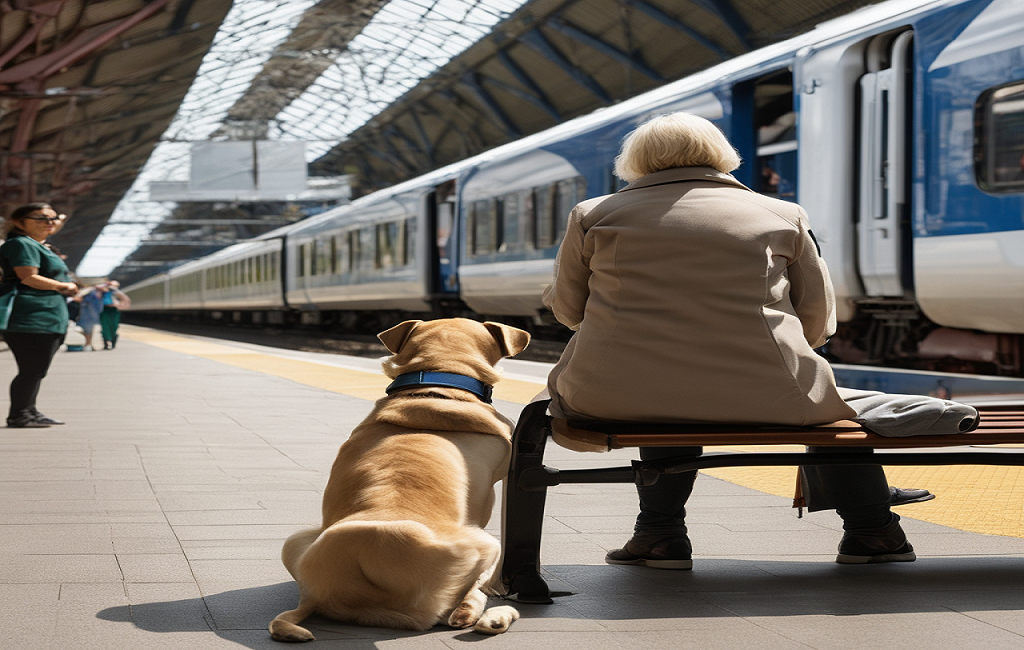
- Pale Gums
In serious cases of bloat, lower blood flow can lead to shock and cause pale gums or nasal membranes in dogs. This happens because the body shifts blood flow towards important organs like the heart rather than secondary areas like the gums.
- Collapse or Inability to Stand
As the condition progresses , your dog may become unable to stand or even fall due to lack of blood flow and oxygen supply. At this time, quick medical care is important, as the risk of death greatly increases.
If you notice any of these signs in your dog, call your doctor quickly. Prompt medical assistance is crucial for dogs having bloat in order to avoid further problems or fatal outcomes. Being aware of the signs can possibly save your dog’s life.
Other Health Concerns Associated with These Breeds
While bloat is a big worry for certain dog breeds, it is not the only health issue that owners of these breeds should be aware of. In fact, these types are also at a higher risk for other dangerous health problems.
Hip Dysplasia:
One common health issue among bigger dog breeds, such as Great Danes and Saint Bernards, is hip dysplasia. This problem happens when the hip joint does not grow properly and can lead to pain, stiffness, and trouble moving. Hip dysplasia is a genetic condition, meaning it can be passed down from parent dogs to their children. It is important for owners of these breeds to ensure that their pup’s parents have been screened for this problem before breeding.
Gastric Dilatation-Volvulus (GDV):
Similar to bloat, GDV is a life-threatening disease that mainly affects big and deep-chested dog types such as German Shepherds and Irish Setters. GDV happens when the stomach fills with gas or liquids and then turns on itself, cutting off blood flow to important organs. This needs quick medical treatment in order to save the dog’s life. While the exact cause of GDV is still unknown, factors such as eating too quickly or participating in intense exercise after eating may increase a dog’s risk.
Canine Obesity:
Obesity is sadly becoming more widespread in all types of dogs but seems to be particularly popular among certain kinds like Labrador Retrievers and Beagles. This can lead to a range of health issues, such as joint problems, heart disease, and diabetes. It is important for owners of these types to watch their dog’s food and exercise level in order to avoid weight gain.
Cancer:
While all dogs are at risk for getting cancer, it appears that certain kinds may be more prone to certain types of cancer. For example, Golden Retrievers have a higher rate of lymphoma, while Boxers are more likely to develop mast cell tumors. Early discovery is crucial for successful treatment, so it is important for owners of these types to regularly check their dog’s body for any odd lumps or bumps.
In addition to these specific health issues, it is important for parents of any breed to be aware of possible risks and take steps to ensure their dog’s general well-being. This includes regular vet check-ups, maintaining a healthy diet and exercise routine, and keeping up with necessary vaccinations and preventatives. By being responsible in looking for your dog’s health, you can help them live a long and happy life.
Choosing the Right
When it comes to picking the right type of dog, there are a few things to consider. This is especially important for those who are worried about the greater chance of bloat in certain breeds. Bloat, also known as gastric dilatation-volvulus (GDV), is a life-threatening condition in which the stomach fills with gas and rotates on itself, cutting off blood flow to other vital organs.
The first thing to consider when choosing a dog breed is their size. Large or giant breeds are more susceptible to bloat due to their deep chests and narrow waists, which can make it easier for their stomachs to become twisted. Breeds such as Great Danes, Saint Bernards, and Weimaraners are known for having a high incidence of bloat.
Another factor to consider is the structure of the breed’s digestive system. Breeds with deep chests and narrow waists may also have a higher risk of developing bloat because their anatomy makes it easier for gas build-up and stomach rotation to occur. This includes breeds like Boxers, Dobermans, and Bloodhounds.
Temperament can also play a role in increasing the likelihood of bloat. Dogs that are highly anxious or stressed may be more prone to develop bloat as they tend to swallow air while panting or gulping water due to their elevated heart rate. Examples of these breeds include Dalmatians, Standard Poodles, and Irish Setters.
It should be noted that not all dogs within these breeds will develop bloat, and there are steps that can be taken to decrease the risk. It is important to talk to the breeder or a veterinarian about any concerns and to educate yourself on bloat prevention techniques.
In addition, it is important to choose a reputable breeder who is knowledgeable about the breed and takes steps to prevent bloat in their breeding program. This includes feeding multiple smaller meals rather than one large meal, avoiding exercise immediately before or after meals, providing elevated food bowls, and monitoring for signs of distended abdomen.
Ultimately, choosing the right dog breed for you should not solely be based on the likelihood of developing bloat. Instead, consider the breed’s temperament, energy level, grooming requirements, and other factors that are important in finding a compatible companion. Any dog can be at risk for bloat regardless of breed, so it is important to be aware of the symptoms and seek immediate veterinary care if necessary.

2 thoughts on “Find out Why Dog Breeds are More Likely to Bloat 2023”